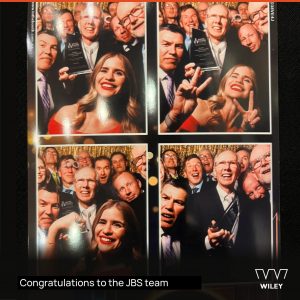You could be forgiven for thinking the cost of energy is spiraling out of control. Electricity is a rising commodity for all businesses; an ever-growing expense with a double-whammy effect on everyone’s hip pocket – not only are we paying a small fortune on our personal electricity bills at home, but the booming price of electricity for businesses pushes up prices for all consumers. We’re all paying those higher electricity costs twice or more.
So, how much of a difference can you make to your facility’s bottom line, by lowering the cost of power? And how do you do it, without affecting productivity? Better still, can you make changes that will boost productivity and profitability?
Brett Wiskar will be speaking at FoodPro 2017 about the many ways Wiley consultants can help reduce a facility’s power usage.
“It’s not uncommon to find businesses that have million-dollar power bills, or four or five-million dollar power bills, and in some cases we know of some businesses in the food industry that have power bills annually across a few different facilities, that number in the dozens of millions of dollars,” says Mr Wiskar.
“But the businesses are not actually making dozens of millions of dollars, so if there’s a way in which they can constrain their costs around energy usage, they can become a much more profitable business.”
As head of Research, Development and Innovation at Wiley, Mr Wiskar says there are a range of energy-saving options for businesses to consider.
“There is a better way to do it, but businesses don’t know what it is. That’s an area we can really help.”
There are three main ways to save:
1) Simply saving electricity.
How can a facility drive down the volume of power it’s using? According to Brett Wiskar, there are many ways to reduce consumption. “For example, if you’ve got a cold facility, if you can minimise the number of times that you open the door, or minimise the number of seconds the door is open for, then you can significantly drop your costs. You can design a more energy-efficient facility by using better insulated panels, letting out less cold throughout the course of the day. You can also build a smart facility where it detects when the facility has changed temperature, and turns on the appropriate coolers (and no more), so you diminish how you spike your energy consumption.”
2) Improving efficiency of existing procedures and practice.
How do you use the energy that you are using, most efficiently? “So if I’m drawing a megawatt a day, how do I produce the most units? By making sure my processes are most efficient. And how do I minimise waste?”
3) Making your own energy.
How does a business produce energy? Brett Wiskar say this is a growing area of expertise. “Producing energy is interesting. We’ve all got solar panels on our roof that help heat our hot water, or help offset our electricity bill. But in production environments, there are different ways to go about that. If you are a red meat facility, you could conceivably (on the paddock across the road) build yourself a solar farm that might produce one megawatt of the four megawatts that you need, and that cuts your annual five million dollar power bill by 25%.”
The first step is to conduct an energy audit, including a full profile analysis of a facility’s electricity draw.
“There is no significant manufacturing business that would rely heavily on electricity that we don’t think we could cut their power bills, just by coming up with a clever solution on how they could self-generate some electricity. Or alternatively, reconfigure their facility so that it draws less power when it’s operating.”
“$50,000 worth of thinking might save you a million dollars a year in electricity, but it saves you a million dollars a year every year going forwards. So investing in a consultancy to identify how your energy consumption looks – if you can identify the wins, you get the wins month after month, quarter after quarter, year after year, for ever and ever.”

Sign up to watch Brett speak at FoodPro



